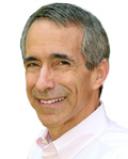
Sleep
Let Air Traffic Controllers Nap
You don't want air traffic controllers making mistakes - any mistake.
Posted April 21, 2011

Sleeping and Flying
It's a national emergency: air traffic controllers have fallen asleep in Reno, Washington, and several other cities. Planes carrying severely ill patients arrive at airports where "nobody" is in charge. The government head of air traffic control has resigned. Michelle Obama's plane must veer off its approach.
What's going on?
It's very much the same situation that occurs with pilots: if you violate human nature and the need of all terrestrial creatures to rest, something's gotta give. In this case, it's sleep - uncontrollable sleep.
We're not machines. You don't turn our switches off and on. Rest is required like food to rebuild our bodies, or we don't function or even survive.
Here are some reasons that air traffic controllers and pilots are falling asleep on the job. Sadly, very similar problems occur in most night-shift workspaces.
1) Crazy Schedules
People want a daytime life while working swing and night shifts. Your kids and spouse live on a different schedule from you, and they don't really understand why you're sleeping while they're up.
Most human beings cannot do the social part of night-shift work very well.
To understand night-shift work, try to remember what jet lag feels like (OK, there are some people who don't experience jet lag, but they're few). For most night-shift workers, being at work is like having perpetual jet lag.
Due to family pressures and the desire for a social life, many air traffic controllers try to run several eight-hour work shifts in sequence. When they get this schedule, they sometimes manage to get three days off in a row.
But when they try to sleep, their body clocks are so messed up that the brain thinks it's time to be awake. They can't sleep. They start the next shift severely sleep-deprived, which then provokes uncontrollable sleepiness. Professors Charles Czeisler and Greg Belenky clearly point this out. It's clear that if you don't use the body the way it's built, people make innumerable errors. They often don't even know they're asleep, as Torbjorn Akerstedt demonstrated in Swedish train conductors, who drove at night with their eyes open, fully asleep.
There are many different ways to schedule night shifts, and there are quite a few companies that will research your company's practices and tell you how to do it better. The Department of Transportation has already called in NASA and MITRE Corporation to provide more livable schedules. Increasing rest periods between shifts to nine hours is helpful, but not nearly enough. This job needs to be done right now.
2) Repetitive Work
Put people in dark rooms. Surround them with dark monitors patched with flickering luminous lights. Make them work in the middle of the night where often nothing at all is happening - until it does.
What a great way to get people to fall asleep.
Ways to fix this situation are legion. Most involve combinations of elements of the LENS program - light, exercise, naps and socialization.
Light wakes people up and resets body clocks.
Exercise alerts people and helps overcome the negative effects on blood lipids and weight that come with eating and working at night.
Naps revive people, because sleep is what they need (see below).
Socialization alerts people and lets them enjoy each others' company, adding social support and camaraderie when people can feel terribly alone.
Put these four things together and you've got a simple system to keep people more alert at night. Other measures include properly timed use of caffeine and workplaces that keep people moving and thinking as they labor.
3) Reinventing The Wheel
When people are sleep- and rest-deprived, they need rest, just like they need food. Naps can fulfill that need, and are effective and safe under programmed, controlled conditions. Other countries, particularly many in Europe, have allowed controlled rest for pilots and air traffic controllers for years. We can learn from their experiences.
You can also check the scientific literature. In the 1980s NASA allowed cockpit pilots short naps. On their measures, alertness went up by over half, and performance by more than a third. One of the authors of that study, Mark Rosekind, is now a member of the National Transportation Safety Board.
Those results were for mid-day naps. Naps are far more effective when provided when people really need sleep - in the middle of the night.
Naps are not foolproof, however. If people nap a little too long, they can go into deep sleep. It can take colleagues a couple of minutes to wake someone from deep sleep, and they may remain torpid for quite a while after.
Yet short naps, with colleagues available to do necessary work, have a very useful place in aiding shiftwork, particularly for emergency and transport workers.
This means that the laws and regulations need to be changed. Currently, if someone falls asleep on the job, they're fired. That's what the rules declare for pilots and air traffic controllers. And that's what many Congressmen, including John Mica of the House Committee on Transportation and Infrastructure, think should be the rule. Fall asleep and you're gone, as if sleeping were a crime. People need rest as much as they need food. Deprive an animal of sleep and it dies.
Can we imagine eating on nightshift as an immediate firing offense?
It's time to put human nature back into the human workspace. If we want air traffic controllers to perform their jobs flawlessly day and night, they should be allowed to sleep.



